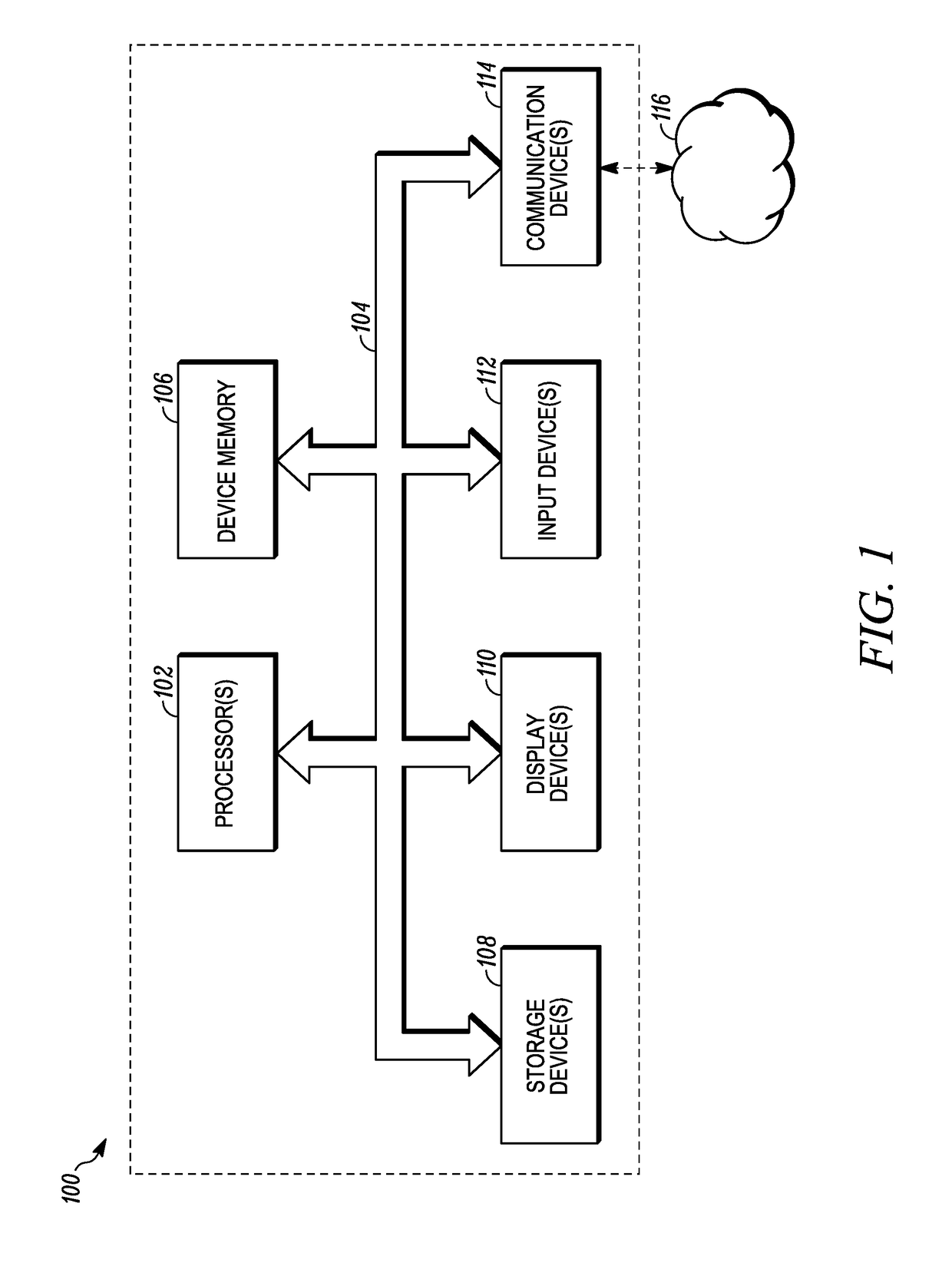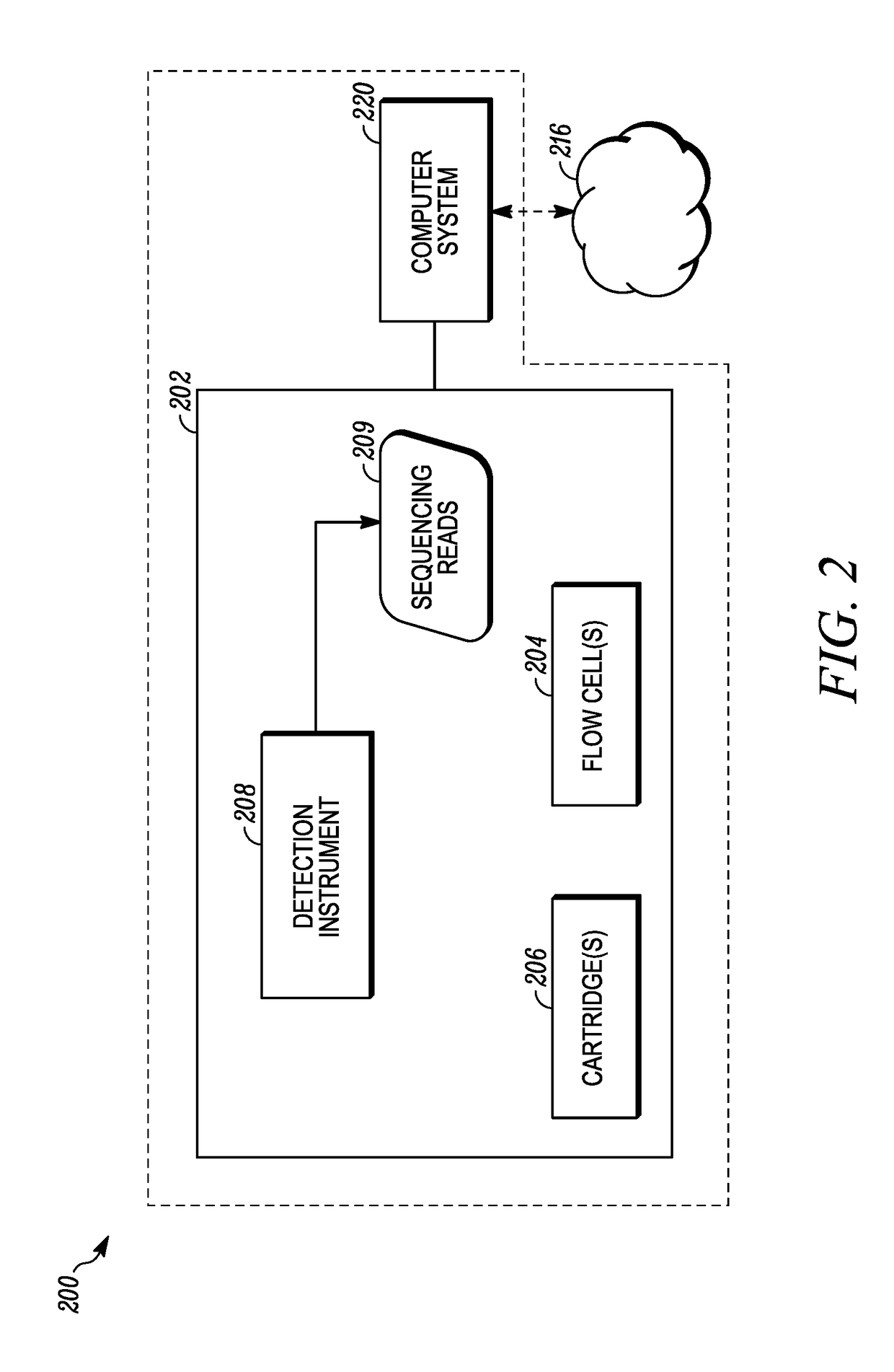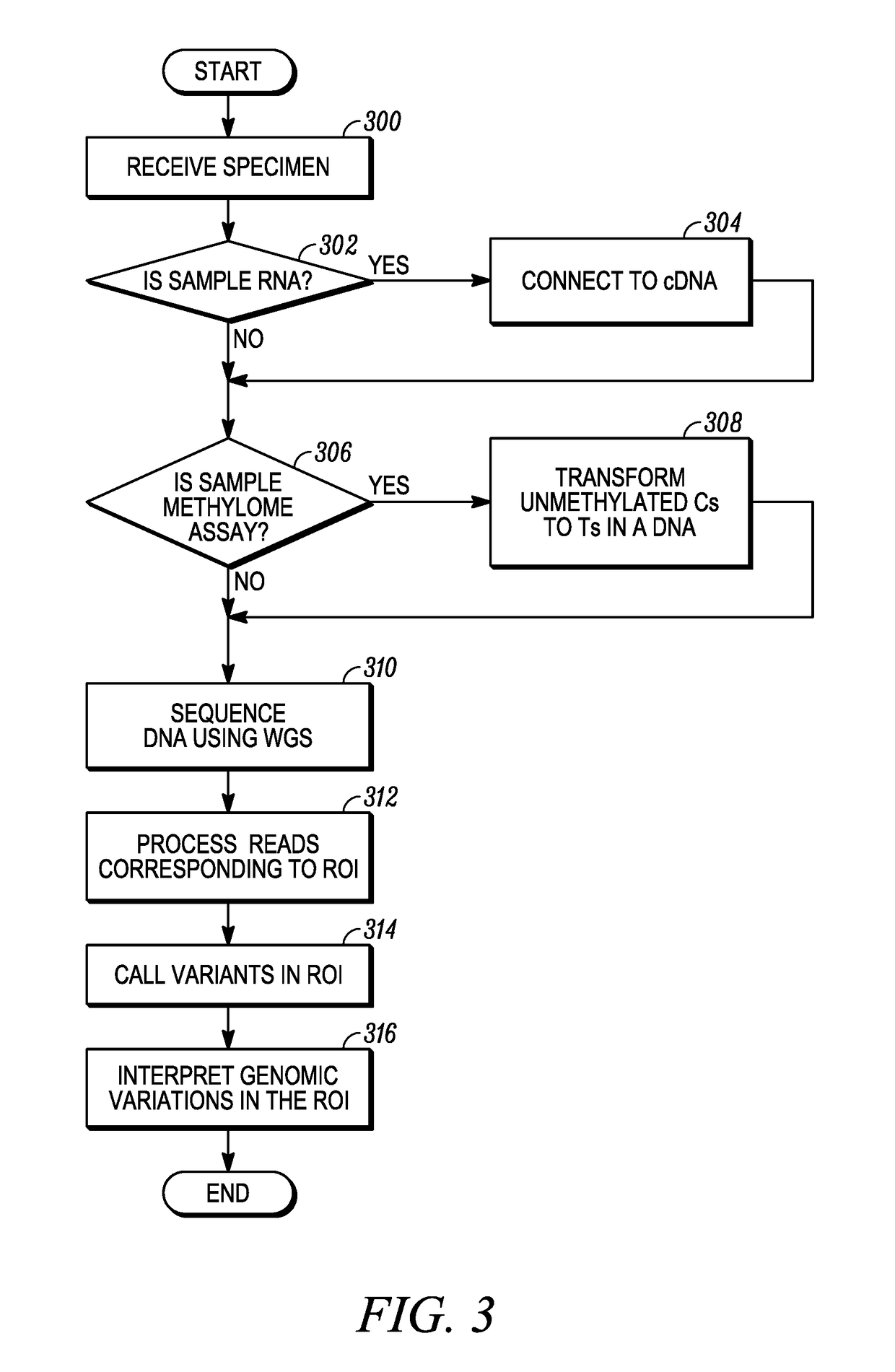Conventional
genetic testing currently has unique and significant challenges, both in reliability of detection of a given genetic condition, and also with respect to the resulting ethics and privacy concerns regarding a person's genetic information, including protection from genetic discrimination, e.g., by insurers, health care providers, etc.
A genetic test today may have a low reliability of accuracy resulting in an uncertain clinical utility, whereas a future genetic test or technique may have higher result accuracy leading to increased clinical utility.
However, increased sequencing comes at the expense of time required, and thus the overall cost therefore.
When identified, such high-penetrance mutations usually could lead to in a significant alteration in the function of the corresponding
gene product and are associated with large increases in
cancer risk.
There is currently great uncertainty whether conventional algorithms are well calibrated or whether the risk estimates conventionally provided through genomic
risk assessment are accurate.
However, conventional genetic tests for intermediate-penetrance mutations and genomic profiles of variants linked to LPVs (low-penetrance variants) are of uncertain clinical utility because the
cancer risk associated with the
mutation or variant is generally too small (or unreliably detected) to form an appropriate basis for
clinical decision making.
Clinically ambiguous test results could produce unjustified alarm and may lead patients to request unnecessary screening and other preventive care that can cause physical discomfort or harm and increase costs.
On the other hand, false reassurance may result from ambiguous test results or results associated with minimal
cancer risk discouraging individuals from taking appropriate preventive measures.
Conventional
genetic testing has a low reliability of accurate detection of intermediate-penetrance mutations or low-penetrance mutations.
On the other hand, detection techniques which require larger numbers of any of the GiSet results in a later or delayed detection of the relevant
disease.
1. Making a “reduced sample /
genome” from an original sample /
genome. This reduction is done by
genome enrichment of the loci of interest (LOI) within the sample. The LOI often comprises a very small part of the genome, e.g., <1%. The enrichment step is done by either hybridization-based or
amplicon-based methods such as PCR.
2. Optionally, a tag is added to the genome fragments to enable Molecular Barcoding. The tagging step can be performed either before or after Step 1.
3. A
high coverage (often >500×) sequencing is conventionally required on the reduced sample to provide a reliable result, but as mentioned
high coverage sequencing takes more time and thus increases costs.
4. Optionally, the tagged fragments are uniquified, to reduce the biases caused by the
assay (in particular, the PCR step). As the coverage depth increases in Step 3, the usage of molecular barcoding becomes inevitable.
6. Variants are called (i.e., identified) on the mapped reads.
Conventional genomic tests to sequence a complete or a partial genome modality suffer in that the genomic tests often do not have sufficient information content to successfully, or reliably, perform the task.
Reliability of the genomic test's result may also be adversely affected by variations that exist in the normal
DNA of the individual.
However, the inventors hereof have recognized that there are nevertheless problems with affected vs. normal tests.
For instance, both affected and normal samples should be available at the time of acquisition, but in practice this may not be possible, or may be expensive to achieve.
For example, providing a sample from a healthy (normal) tissue may not be accessible, or may even cause ethical issues if the sample's volume is not negligible, or if the
normal tissue is hard to access, etc.
If not, the differential mode of analysis would be biased, and even if similar volume samples are attempted, even just sampling error between the two can cause an imbalance in the acquired samples.
However, if the source is limited, such as in tissue, the amount of material provided for the normal sample is also limited (similar to that of the affected sample).
As a result, any stochastic bias that would exist in the
assay will then bias the results.
Consumers who receive test results directly may have pursued testing without the benefit of pre- or post-test counseling and may be unprepared to receive ambiguous or clinically significant results from tests with established clinical utility.
Where clinical utility is uncertain, providers face the added challenge of explaining why test results lack clinical consequences.
There is also a concern that risk calculations for the same conditions derived from DNA samples from the same individual can conventionally yield disparate results when analyzed by different DTC laboratories.
With these concerns in mind, only limited
genetic testing for
disease susceptibility has typically been offered as LDTs or in some cases as directly to consumers when the individual being tested has a personal or family history suggestive of susceptibility to a given illness that has a known
genetic marker capable of reliable detection.
Individuals who order DTC (direct-to-
consumer) tests of uncertain clinical utility may ask their health care providers for help interpreting test results and for access to follow-up care, but this poses significant challenges to the providers who had no role in initiating or recommending the uncertain genetic testing in the first place.
 Login to View More
Login to View More 


